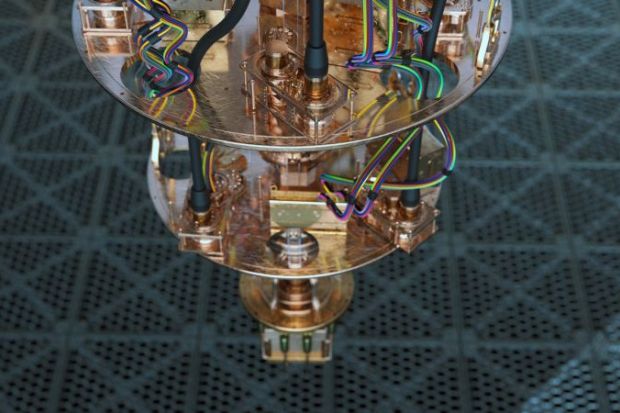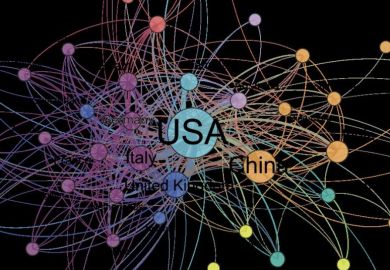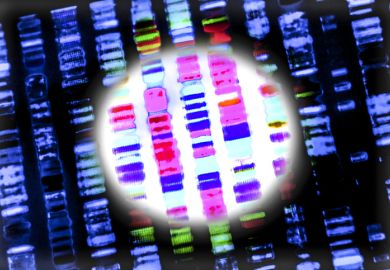The Gartner hype cycle is a graphical representation of the five phases that new technology typically goes through before its true value is realised and it finds a stable market niche.
After the first “technology trigger”, hype rapidly drives the curve of “visibility” up to the “peak of inflated expectations”. Then, early failures give rise to negative press, plunging it into the “trough of disillusionment”. Slowly, however, new applications emerge, and the curve rises along the “slope of enlightenment”, before the mature technology settles on the “plateau of productivity”.
Not all technologies in the foothills of the first peak make it to that final plateau, though. Their long-term fate is often sealed by strategic decisions made very early on.
Observers of quantum technologies may be excused for thinking they are now at the top of peak of inflated expectations. Hardly a day goes by without a technology giant, an enthusiastic start-up or an ambitious academic researcher boasting some breakthrough that suggests mainstream quantum computing is just around the corner. Gartner, the US information technology research and advisory company that devised the curve, believes it is only early days, however. In its 2021 report, it deemed quantum machine learning to still be a technology trigger: a promising technology to watch and invest in. This means we face another decade, at least, of hype.
With the technology trigger, of course, comes the money. We are seeing that, too, and that’s a good thing. Quantum computing is a formidable challenge, requiring dedication, long-term vision and sustained investment. But because we are only at the start of the journey, we must get this right if we are to secure the way forward.
I write this at a very happy moment for my field of research of silicon-based quantum computing. For the first time, three independent research groups, including my own, have demonstrated the ability to perform universal quantum operations in silicon with better than 99 per cent fidelity, which means less than one error every 100 operations.
This is a key threshold at which it becomes possible to detect and correct errors more quickly than they occur, allowing the computer to reach the correct result. These results were published this week in three back-to-back papers in Nature. It’s extremely rare for three very similar papers to be published in Nature on the same day, but it’s not coincidental and perhaps the most inspiring side of the story.
The three research groups – at UNSW Sydney, Delft University of Technology in the Netherlands, and Riken in Japan – have a long history of collaboration and open scientific exchange. This is a key reason why we have achieved this level of performance in our silicon quantum processors.
Lieven Vandersypen, the leader of the Delft team, spent a sabbatical at UNSW in 2016 and met several of our team members. One, Giordano Scappucci, now leads the materials development team in Delft. There, he produced a special stack of silicon and silicon-germanium alloy, which was key to the performance of their quantum processor. The material was shared with the group of Seigo Tarucha at Riken and used for their recent experiments.
The silicon material we used at UNSW was supplied to us by another Japanese colleague, Kohei Itoh. Among my team, one of the lead authors, Mateusz Mądzik, now works in Delft, while the other, Serwan Asaad, is a former Delft graduate.
Alongside this Australia-Netherlands-Japan triangle was another key player – Sandia National Laboratories in US. There, the team led by Robin Blume-Kohout developed a new method to certify the performance of our quantum processor. That method was also made openly accessible and was adopted by the Delft group as well.
There are important lessons to be drawn from this story, with long-term repercussions.
First, now that private investors are getting involved in quantum technologies, we must be careful not to sacrifice the free circulation of ideas, people and materials for the needs of commercial confidentiality. Money is no substitute for good ideas, especially in a revolutionary field such as quantum technology. Ideas only thrive in openness. Indeed, some of the most successful quantum companies are explicitly transnational and collaborative, actively forming alliances with other companies in the global quantum ecosystem, as well as engaging deeply with academia.
Second, governments must continue to support basic research and take a long view of the return on investment.
I remember vividly a meeting where a US government delegate explained to me that, ever since the Manhattan Project, American government agencies have had a very clear picture of where their technological advantage comes from. They know that the iPhone was created in the US not only because of Steve Jobs’ entrepreneurship but because decades of government-funded, curiosity-driven research laid the foundations for developing the innovative components of the device.
Unfortunately, not all governments have access to such well-documented histories and prefer to prioritise short-term translational research. This hardly ever pays off in the long term.
Finally, education and training are crucial to success. The workforce necessary to build the quantum technology ecosystem is in short supply. Skilled graduates and experienced quantum engineers can roam the globe for attractive jobs, as many of our teammates have done.
The most successful quantum enterprises will be those based in countries that both train the local quantum workforce and attract the global one. Quantum Valley need not necessarily be in northern California. But anyone else with designs on it needs to act boldly and quickly – while fostering the creation and circulation of brilliant new ideas.
Andrea Morello is Scientia professor of quantum engineering at UNSW Sydney.
Register to continue
Why register?
- Registration is free and only takes a moment
- Once registered, you can read 3 articles a month
- Sign up for our newsletter
Subscribe
Or subscribe for unlimited access to:
- Unlimited access to news, views, insights & reviews
- Digital editions
- Digital access to THE’s university and college rankings analysis
Already registered or a current subscriber?









